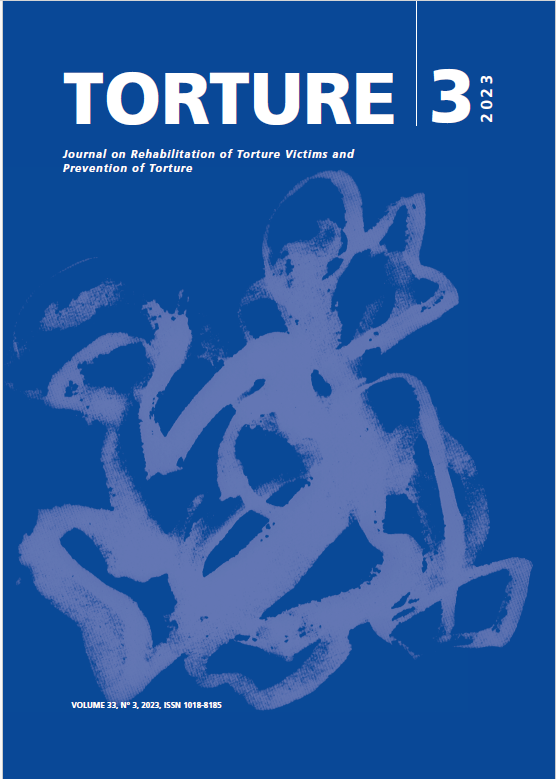Enforced disappearances in the context of migration: A brief review of General Comment No.1 of the Committee against Forced Disappearances
DOI:
https://doi.org/10.7146/torture.v33i3.141443Keywords:
General Coment, Committee, United Nations, Enforced DisappearancesAbstract
The reasons that lead a person to initiate a migratory movement are manifold. Therefore, the conditions and the way in which this movement is carried out are also diverse and unequal. Currently, there is not a single country in the world with open borders. This means that each country sets the requirements that a person must meet to enter its territory. This confirms that the “right to migrate” is not fully recognized in any legal system1. Because not everyone can meet these requirements or are denied visas, in many cases people are forced to use forms, routes, and modes of transportation that risk their integrity or lives to make a cross-border migration move. But that’s not all: thousands of migrants disappear on the way to their destination country or in the destination country itself. In many cases, we do not even know whether they have died or whether something 1 Human rights treaties generally recognize the right to enter and leave one’s own country, but not the right to enter another country. Most of what is recognized in the Universal Declaration of Human Rights is that “everyone has the right to seek and to enjoy in other countries asylum from persecution.” See: (Castilla Juárez K. , 2024) has happened to them. We simply do not know anything more about these people. Faced with this situation, which has been analyzed, studied, and attempted to be documented for several years2, the United Nations Committee against Forced Disappearances took a step forward by adopting, on September 18, 2023, its first General Comment dealing specifically with “enforced disappearance in the migratory context3”. This occurred primarily because the Committee is deeply concerned about the increasing trends of enforced disappearances in the context of migration, and because it notes with great concern that cases of enforced disappearances are frequently reported along various migration routes.
References
Castilla Juárez, K. (2018). Asesinato de personas migrantes sine permissum en tránsito ¿un crimen de lesa humanidad competencia de la Corte Penal Internacional? Revista Mexicana de Ciencias Penales, 1(4), 21-48. Castilla Juárez, K. (2024). Article 13 – Freedom of Movement and the Right of Residence. In H. Cantú Rivera (Ed.), The Universal Declaration of Human Rights. A Commentary, (pp. 314-334). Leiden: Brill-Nijhoff. Committee on Enforced Disappearances. (2023). General Comment No. 1 on Enforced Disappearances in the context of Migration. Duhaime, B., & Thibault, A. (2017). Protection of migrants from enforced disappearance: A human rights perspective. International Review of the Red Cross, 99(2), 569–587. International Organization for Migration. (2013). Fatal Journeys: Tracking Lives Lost during Migration. International Organization for Migration. (2022). Global Data Overview of Missing Migrants Data. Laakkonen, V. (2022). Deaths, disappearances, borders: Migrant disappearability as a technology of deterrence. Political Geography, 99. Martinez Castillo, G. (2021). Working with families of disappeared migrants: from objects/subjects of study to knowledge producers. Alteridades, 31(62), 57-69
Downloads
Published
How to Cite
Issue
Section
License
Copyright (c) 2023 Torture Journal

This work is licensed under a Creative Commons Attribution-NonCommercial-NoDerivatives 4.0 International License.
We accept that some authors (e.g. government employees in some countries) are unable to transfer copyright. The Creative Commons Licence Attribution-NonCommercial-NoDerivatives 4.0 International (CC BY-NC-ND 4.0) covers both the Torture Journal and the IRCT web site. The publisher will not put any limitation on the personal freedom of the author to use material contained in the paper in other works which may be published, provided that acknowledgement is made to the original place of publication.


